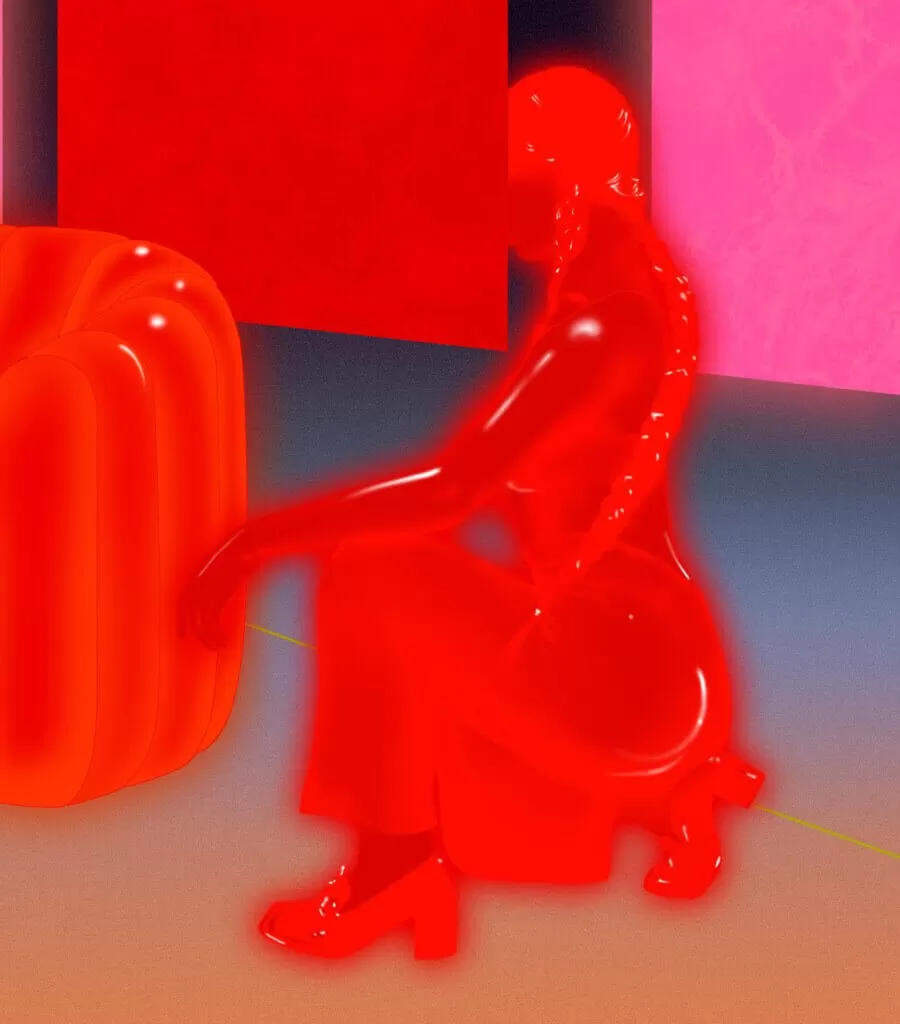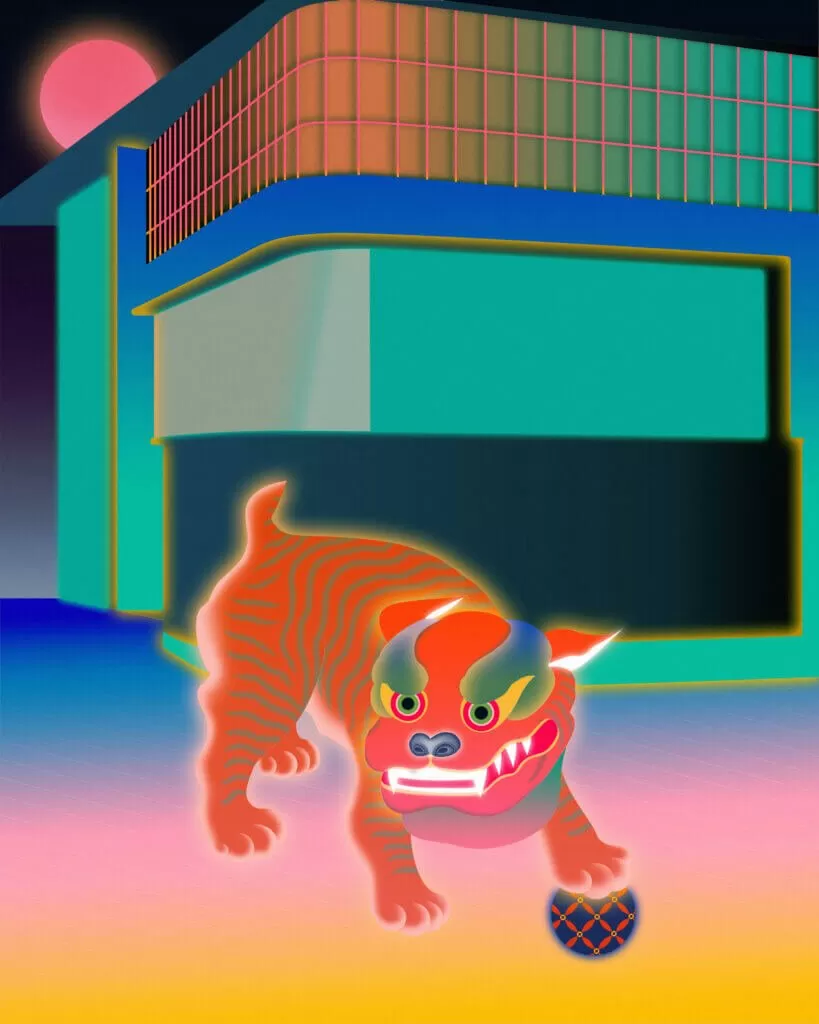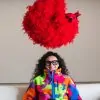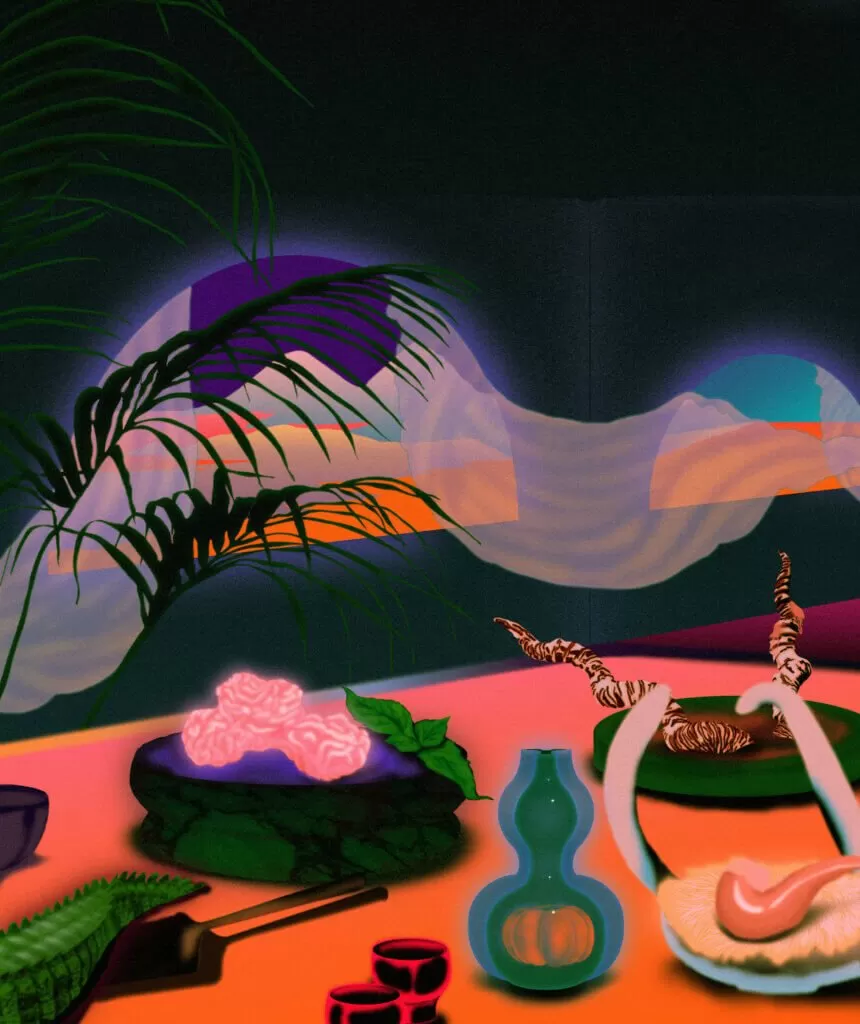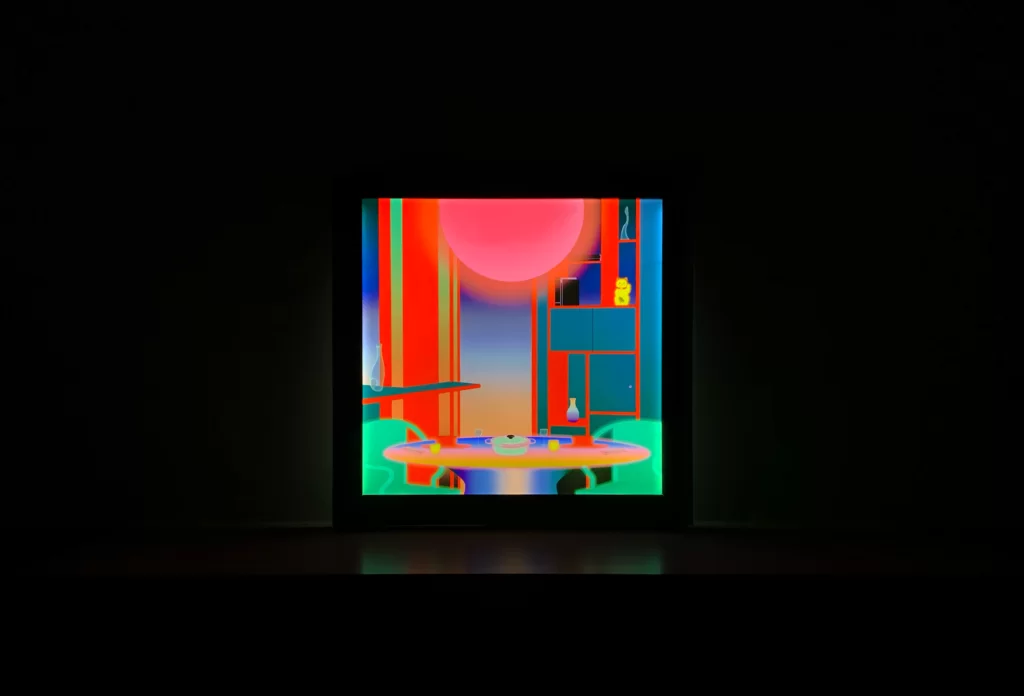Toronto-based artist Bernice Liu, otherwise known as Spime, conceives incredible surreal scenes infused with cool tranquillizing colours that most of us can only dream of. Inspired by life experiences, her work focuses on the fluid boundaries between cultures, investigating how cultural adaptation enables individuals to alternate their identities.
I try to frame experiences that move me to explore the inner worlds without conventional space and time
Bernice Liu
In her current work titled ‘Portals‘, a series of dreamlike compositions secured in a futuristic aesthetic universe. She explores how understanding this dynamic brings a new aspect of discussing the significance of diversity. She utilizes her compositions to evoke nostalgia and futuristic hope, signifying the conventions of Sino-Asian stereotypes, adolescent memories, and urban life.
Q: What is your inspiration, and why do you do what you do?
Spime: My inspiration comes from my childhood memories of living in Hong Kong, and I try to frame experiences that move me to explore the inner worlds without conventional space and time. As a result, the scenescapes usually end up looking like fragments of dreams. In my latest work, Portals, I am surfacing contradictory and nuanced feelings of being in two places at once.
Q: Can you tell us about your creative process?
Spime: My practice spans across mediums of digital art, LED light panels, and printmaking, so it’s different depending on the piece. But I usually start with digital sketches and render them subsequently. I like to use digital media as a point of departure because of its flexibility, volume, and hues.
Then there is a very meticulous back and forth printing process to produce the highest value of pigments and ongoing experimentations with different lighting, to emulate the feeling of traveling through these Portals and transport the viewer into the otherworldly.
Q: Your current work Portals depicts visual wonders full of colour in a futuristic aesthetic; what was your inspiration behind it?
Spime: Growing up, I would always deliberately not wear my prescription glasses, and in doing so it gave me the superpowers to look at the world through a blurred lens. And over the years, this atmospheric understanding of how colors work and how they blend together in different lighting has led me to choose colors that engage with my haptic senses.
I also find places of comfort and tranquility as the source of inspiration, like a sun-lit beach or a sunset on top of a mountain. There’s a sort of universal appeal to travel to places like that and more than ever right now.
Q: What was the first piece of art you made that cemented your path as an artist?
Spime: The Hallway.
Q: What was your most memorable exhibition, and why?
Spime: I was part of a group show in Hong Kong for a series of works titled MASKS. I was drawn to totem poles and traditional masks for their bold, graphic, and rich mythology. This was during a time before I had gone through any artistic training, but witnessing the whole art sales process anchored my belief that this could be a viable career path.
Q: What is your favourite piece, and why?
Spime: This is a hard question to answer. But the most recent piece is a commercial art for Bloomberg Businessweek magazine, for a story about neolithic and paleolithic cooking. Outside of personal work, I enjoy creating work that transcends itself into new narratives. I think art in commerce that enabled viewers to create their own interpretations is the best kind of work.
Q: What do you think about the current state of the art world?
Spime: I think now is a really interesting time for art, with AI invasion and everything digital becoming more invasive and personal, more online platforms will serve as a marketplace, and blockchain in art is likely going to change the behaviors of collectors and attract new and young art collectors to participate. In my ongoing AI series, I am exploring future art-making tools to highlight the role of tech that has changed from traditionally being the facilitator of art to a more active collaborator and producer of art. I’m excited to see how the next convergence of tech will push the boundaries of artistic practices.
Q: What role does the artist have in society?
Spime: I think art can be a powerful force to inspire. It’s about discovering and telling your own story.
Q: What artists have caught your attention in the last five years?
Spime: KENZ, Lauren Legiers, Aiste Stancikaite, Erik Foss, Emma Stern, Caroline Larson
Q: What’s next for you as an artist?
Spime: Preparing for homecoming solo shows in Hong Kong and Shanghai. Seeking opportunities that critically examine my art practice. Figuring out ways for more efficient studio time. Continuing my artistic pursuit to explore the otherworldly, and playing with portals to find the places in between.
https://www.instagram.com/spimespimespimes/
©2021 Spime




